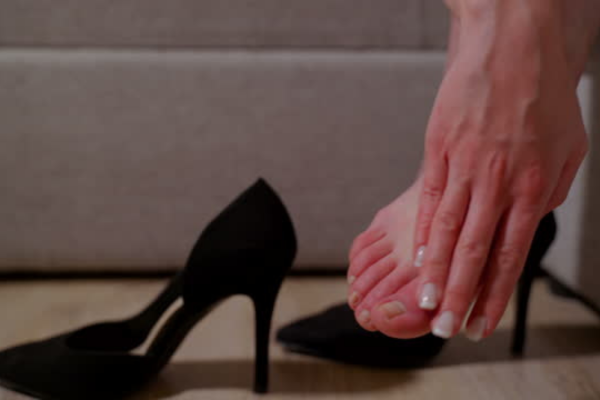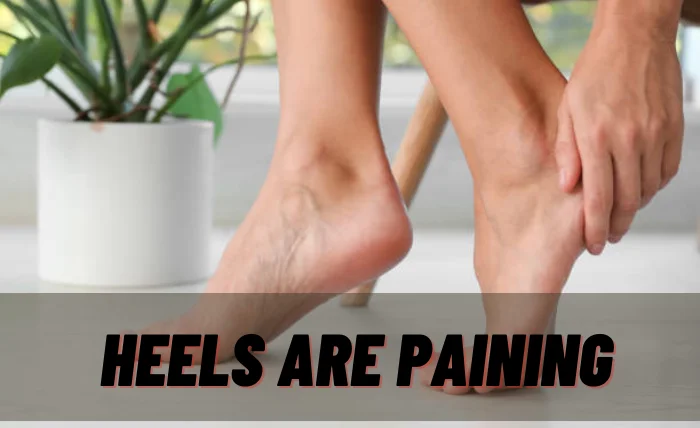In the bustling world of today, where every step we take is a leap towards our goals, the phrase Heels Are Paining is more than just a complaint; it is a significant hindrance that can derail our daily routines. Heel pain, a common ailment affecting countless individuals, demands our attention not just for the sake of comfort but for maintaining our pace in this fast-moving world.
The root cause of this discomfort is pivotal. Heel pain can emanate from various sources, be it the excessive strain from long hours on our feet or the choice of footwear that doesn’t provide the necessary support. It’s a signal from our body, indicating the need for a pause or a change in our routine.
Addressing heel pain involves a multifaceted approach. It’s not solely about the immediate relief but about adopting long-term strategies that ensure the well-being of our feet. This article aims to enlighten you with knowledge and practical advice, making your journey through this challenge not just bearable but also informative and, surprisingly, enjoyable.
Heels Are Paining A Closer Look

Heel pain is an ailment that can arise from numerous factors. The structure of our feet, especially the heel area, is a complex assembly designed to absorb the impact of our steps. When this area is overwhelmed, pain is often the result, signaling an underlying issue that requires attention.
One common culprit behind heel pain is plantar fasciitis, a condition where the thick band of tissue that runs across the bottom of your foot becomes inflamed. This inflammation can cause intense discomfort, particularly with the first steps in the morning or after periods of rest.
Another factor could be Achilles tendinitis, which involves the tendon connecting the calf muscles to the heel. Overuse or strain can inflame this tendon, leading to pain that intensifies with activity.
A Fluid-filled Sac At The Back Of The Heel
Heel bursitis and stress fractures are also notable causes. Bursitis results from the inflammation of the bursa, a fluid-filled sac at the back of the heel, while stress fractures are small breaks in the heel bone, typically due to repetitive stress.
It’s crucial to identify the specific cause of heel pain, as the treatment approach varies accordingly. Consulting a healthcare professional is a wise step towards diagnosis and developing a tailored treatment plan.
Footwear Choices: A Path to Comfort
Selecting the right footwear is critical in preventing and managing heel pain. Shoes that lack adequate support or cushioning can exacerbate existing conditions, while the right pair can significantly alleviate discomfort.
Opt for shoes with a firm heel counter, ample arch support, and a cushioned sole. These features work together to reduce the impact on your heels and distribute pressure more evenly across your foot.
Flat Shoes With Thin Soles
Avoid high heels or flat shoes with thin soles, as they can put additional strain on your heel and arch. Instead, choose shoes with a moderate heel height, which can help relieve pressure on the heel and Achilles tendon.
For individuals suffering from plantar fasciitis, shoes with a slightly raised heel and good arch support can make a notable difference. Similarly, those with Achilles tendinitis may benefit from shoes that cushion and support the heel, minimizing strain on the tendon.
Home Remedies: Simple Yet Effective
There are several home remedies and exercises you can employ to alleviate heel pain. These methods are easy to implement and can offer significant relief when practiced consistently.
Stretching exercises, especially those targeting the Achilles tendon and plantar fascia, can help loosen tight muscles and reduce pain. Gentle stretching in the morning and throughout the day can prevent stiffness and ease discomfort.
Ice therapy is another effective remedy. Applying ice to the affected area for 15-20 minutes several times a day can reduce inflammation and numb the pain. Be sure to wrap the ice in a cloth to avoid direct contact with the skin.
Over-the-counter pain relievers, such as ibuprofen or acetaminophen, can provide temporary relief from pain and inflammation. However, it’s important to use these medications as directed and consult with a healthcare provider if pain persists.
Flat Shoes With Thin Soles
Elevating the feet can also help reduce swelling and pain. When resting, prop your feet up above the level of your heart to encourage fluid drainage and reduce inflammation.
Incorporating these simple practices into your daily routine can make a significant difference in managing heel pain. They are not only effective but also empower you to take control of your discomfort and improve your quality of life.
Professional Treatments: When to Seek Help
While home remedies and lifestyle adjustments can be effective in managing heel pain, there are instances when professional treatment is necessary. Persistent pain, severe discomfort, or symptoms that worsen over time warrant a visit to a healthcare provider.
Physical therapy is a common recommendation for heel pain. A physical therapist can develop a personalized exercise program that addresses the specific causes of your pain, improves flexibility, and strengthens the muscles around the heel and foot.
Structural Issues In The Foot
Orthotic devices, such as custom shoe inserts or heel cups, can provide additional support and cushioning. These devices are designed to correct any structural issues in the foot that may be contributing to heel pain.
In some cases, more advanced treatments may be required. Corticosteroid injections can offer temporary relief for severe inflammation, while shock wave therapy is a non-invasive option that uses sound waves to stimulate healing in the affected area.
Surgery is considered a last resort and is typically only recommended when other treatments have failed to provide relief. The type of surgery depends on the underlying cause of the heel pain but can include procedures to release the plantar fascia, remove bone spurs, or repair the Achilles tendon.
Understanding when to seek professional help is crucial in effectively managing heel pain. A healthcare provider can offer guidance and recommend the most appropriate treatments based on your specific condition and needs.
Conclusion
From choosing the right footwear to implementing home remedies and seeking professional treatment, there are numerous steps you can take to address heel pain. The key is to listen to your body, take proactive measures, and consult with healthcare professionals when necessary.
Heel pain is a common issue that can significantly impact your daily life. However, with the right knowledge, strategies, and treatments, it is possible to manage this discomfort and regain your mobility and quality of life.

